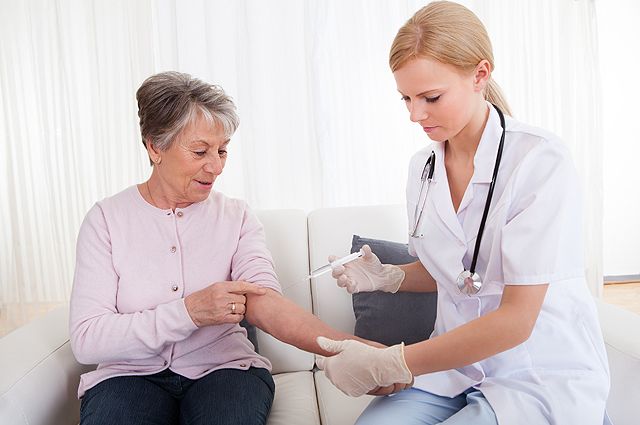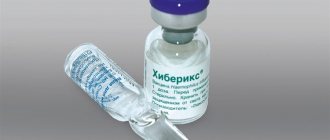Currently, there is an ambiguous attitude towards vaccinations in society. People refuse vaccination for various reasons. They are contraindicated for some, some think they are contraindicated for them, some refuse for reasons of principle, and some believe that vaccinations are a much greater evil than diseases. I want to emphasize that I do not support these points of view, and I believe that vaccinations are necessary. Therefore, in this article I would like to answer the most frequently asked questions about carrying out or not carrying out preventive vaccination of children.
What types of vaccines are there?
- Live vaccines. They contain a weakened living microorganism. They are able to multiply in the body and cause the vaccination process, forming immunity.
- Inactivated (killed) vaccines. They contain a killed whole microorganism; they are killed by physical or chemical methods. Such vaccines are reactogenic and are rarely used.
- Chemical vaccines. Contain components of the cell wall or other parts of the pathogen.
- Anatoxins. Vaccines containing an inactivated toxin (poison) produced by bacteria. As a result of this treatment, toxic properties are lost, but immunogenic properties remain.
- Recombinant vaccines. Vaccines obtained by genetic engineering. The essence of the method: the genes of a virulent microorganism, responsible for the synthesis of protective antigens, are inserted into the genome of a harmless microorganism, which, when cultivated, produces and accumulates the corresponding antigen.
- Synthetic vaccines are artificially created antigenic determinants of microorganisms.
- Associated vaccines. Vaccines of various types containing several components.
Vaccination for adults
There is a fairly common misconception that all necessary vaccinations are done only in childhood; nothing needs to be done in adulthood. But can we limit ourselves to this approach, or are there diseases that require revaccination in adulthood? Let's look at the issue of vaccinations required for adults from 3 points of view:
- Russian National Calendar of Preventive Vaccinations (hereinafter referred to as the National Calendar) in accordance with Order of the Ministry of Health of the Russian Federation dated March 21, 2014 N 125n “On approval of the national calendar of preventive vaccinations and the calendar of preventive vaccinations for epidemic indications” (with amendments and additions dated April 24, 2021) .
- American Centers for Disease Control and Prevention (hereinafter CDC).
- European standards. Since there are no uniform standards, we will focus on the practices of Germany (Ständige Impfkommission) and Great Britain (Public Health England).
Also, after each table, we will discuss the available scientific research over the past few years.
Seasonal flu
Annual influenza vaccination is recommended by all sources, but more detailed recommendations on which groups should benefit from it vary by country.
| Russia | USA | Germany and UK |
| 1. Adults working in certain professions and positions (employees of medical and educational organizations, transport, public utilities); 2. Pregnant women; 3. Adults over 60 years of age; 4. Persons subject to conscription for military service; 5. Persons with chronic diseases, including lung disease, cardiovascular disease, metabolic disorders and obesity. | 1 dose of vaccine for EVERYONE annually. | Germany: only adults over 60 years of age - everyone, annually. Great Britain: 1. Adults under 64 years of age from clinical risk groups and pregnant women at any stage of pregnancy during the epidemic season; 2. Adults over 65 years of age - all, annually, starting in September. |
Research:
There are many types of flu vaccines. In Russia, at the moment, split and subunit vaccines (with or without adjuvant) are mainly used. Other countries have live attenuated (whole virion) vaccines. Some manufacturers of inactivated split influenza vaccines claim in advertising of their products that their vaccines contain not only surface, but also internal proteins of the virus, which allegedly ensure the effective formation of immunity to influenza viruses even with annual mutations of these viruses. However, the effectiveness of the internal proteins of the virus is still in doubt: for example, there is already evidence that the internal matrix protein M2 does not cause the production of antibodies to it.
Whooping cough, diphtheria and tetanus
Immunity against whooping cough, diphtheria and tetanus is not lifelong if vaccinated in childhood, so vaccinations with adsorbed diphtheria-tetanus-pertussis vaccine (DTP) should be repeated in adulthood. Tetanus spores can enter the body not only through the bite of an infected animal, but also through a puncture wound contaminated with soil, street dust, or animal or human feces; through lacerations, burns, and minor or invisible wounds; or by injection (eg, street drugs contaminated with clostridia).
| Russia | USA | Germany and UK |
| All adults over 18 years of age require a diphtheria and tetanus booster every 10 years from the last booster. | From November 2021, adults should be revaccinated once every 10 years with a vaccine containing tetanus toxoid, a reduced amount of diphtheria toxoid and acellular pertussis vaccine (hereinafter referred to as Tdap). | Germany: every 10 years (Tdap). UK: Pregnant women 16 weeks or older (Tdap) |
Research:
Post-vaccination immunity against tetanus can last up to 30 years, so some European countries have already switched to a 20-year revaccination interval. But, given the lack of mono-vaccines against diphtheria and whooping cough, there is little point in such changes. But this explains why unvaccinated adults, vaccinated only in childhood, still rarely get tetanus.
Interestingly, diphtheria disease does not always create protective immunity, so even those who have had diphtheria need revaccination.
Why was the pertussis component added to vaccines against tetanus and diphtheria? A review of published data on the duration of immunity against pertussis suggests that acquired immunity against pertussis wanes after infection after 4–20 years, and protective immunity after vaccination wanes after 4–12 years. Thus, revaccination against whooping cough every 10 years is also advisable.
In Russia, the combined Tdap vaccine is used, which, in addition to components against diphtheria and tetanus, also contains a pertussis component and is presented under one single name.
Those who have recently been revaccinated with Russian adsorbed diphtheria-tetanus toxoid with reduced antigen content (hereinafter referred to as ADS-M), and then unexpectedly learned about the existence of Tdap, should not be sad about the missed opportunity to receive protection against whooping cough and should not wait the next 10 years. According to a Canadian study, the safe minimum interval between ADS-M and Tdap is only 2 years.
Measles, mumps, rubella (hereinafter referred to as MMR)
You can be vaccinated against these three diseases with both a complex vaccine (MCV) and single vaccines. The following vaccines are currently available in Russia: measles monovaccine, measles-mumps divaccine, rubella monovaccine, mumps monovaccine and MMR trivaccine.
| Russia | USA | Germany and UK |
| All adults under 35 years of age (and especially women 18–25 years of age due to the risk of congenital rubella in the child during potential pregnancy) are recommended to receive MMR vaccination and/or booster vaccination if they meet one or more of the criteria listed below: 1. Not sick; 2. Not vaccinated; 3. Vaccinated once; 4. Not having information about measles vaccinations. All adults from 36 to 55 years old (inclusive) belonging to risk groups Vaccination and/or revaccination against measles is required if they meet one or more of the following criteria: 1. Not sick; 2. Not vaccinated; 3. Vaccinated once; 4. Having no information about measles vaccinations. | All adults who do not have evidence that they are immune to measles, rubella or mumps are vaccinated with 1 dose. Evidence of immunity includes: 1. Year of birth before 1957 (not applicable to medical workers); 2. Vaccination certificate; 3. Form with laboratory results of the measured concentration of antibodies against measles, rubella or mumps. | Germany: 1 dose of vaccine for persons over 18 years of age, born after 1970, unvaccinated, whose vaccination status is unknown or vaccinated with only one dose in childhood. UK: Adults are not vaccinated. |
Risk groups for which MMR revaccination is recommended even after 36 years of age, according to the National Calendar, include:
- Employees of medical and educational organizations, trade, transport, public utilities and social spheres;
- Persons working on a rotational basis;
- Employees of state control bodies at checkpoints across the state border of the Russian Federation.
The American CDC identifies special categories of citizens for whom the MMR vaccination schedule may be changed. These include postpartum women, HIV-infected people, university students and medical workers. Separately, it should be noted that MMR vaccination is contraindicated for pregnant women who are not immune to rubella.
Research:
Measles
There is a known phenomenon of sagging immunity against measles at the age of 20-24 years in populations with low circulation of exogenous natural boosters (for example, in countries with a low risk of measles, as confirmed by WHO status).
For example, Chinese scientists believe that at the age of 26 years, the level of seroconversion (the body's production of specific antibodies) can drop significantly and therefore insist on a booster dose (re-immunization) at 15 years, but only in the absence of natural exogenous boosters. According to the results of an Italian study, by age 21, 25% of those vaccinated with two doses in childhood had lost their protective antibody titer. The main result of the study conducted in South Korea also confirms that the age group with the highest risk of infection are young people aged 20-24 years. Measurements were carried out both in antibody titers and in the number of potential contacts: it is at this age that 70% of schoolchildren in South Korea become students.
Parotitis
Quite often, antibodies against mumps are not produced even after 2 doses. Research suggests a third dose of mumps vaccine may be recommended during an outbreak.
Epidemiological data collected from mumps outbreaks in Scotland between 2004 and 2015 was used to mathematically model the effectiveness of the third vaccine dose. The study found that the third dose should reduce the intensity of the outbreak by 2/3 and also reduce the frequency of outbreaks. However, the third dose will not lead to complete elimination of outbreaks, even with a theoretical immunity duration of 80 years. In 2021, the CDC has delegated the decision on whether to administer the third dose during an outbreak to local health authorities.
Rubella
The vaccine strain of rubella virus can be isolated from the throat of a recently vaccinated person, but vaccinated people cannot pass rubella to other people, except in vaccinated women who are breastfeeding. In this situation, the baby may become infected through breast milk: a mild rash may develop, but no serious consequences have been reported. It has been noted that children infected through breastfeeding respond normally to routine rubella vaccination at 12–15 months of age, so breastfeeding is not a contraindication to rubella vaccination and does not change rubella vaccination recommendations.
Chickenpox (Varicella Zoster)
Upon initial infection, Human alphaherpesvirus 3 (HHV-3, commonly known as Varicella Zoster) manifests as chickenpox and remains in the body for life. Subsequent manifestations take place in the form of herpes zoster (Herpes Zoster, see next section)
| Russia | USA | Germany and UK |
| Adults at risk, including those subject to military service, who have not previously been vaccinated and have not had chickenpox. | All adults born in the United States in 1980 or later who have not been shown to be immune to chickenpox—2 doses 4 to 8 weeks apart. | Germany: Adults are not vaccinated. UK: no vaccination (see Hope-Simpson hypothesis) |
Research:
Varicella Zoster virus
should exceed 0.1 IU/ml or >100 IU/L.
Shingles (Herpes Zoster)
| Russia | USA | Germany and UK |
| Vaccination for adults is not provided. | Persons over 50 years of age – 2 doses with an interval of 2-6 months. | Germany: 2 doses of subunit inactivated vaccine 2-6 months apart at age 60 years. UK: live attenuated vaccine at age 70 years. |
Research:
There are concerns about the performance of recombinant Varicella Zoster virus vaccine in immunosuppressed patients. According to the study authors, the recombinant vaccine adjuvant generated a strong primary immune response that served as a stressor that weakened cellular immunity in an immunosuppressed patient, ultimately leading to the release of Varicella Zoster virus from the nerve ganglia and the manifestation of herpes zoster.
It is important to understand that both in the case of vaccination and “wild” chickenpox, the child is infected with the Varicella Zoster virus (VZV) for life. But in the case of vaccination, infection occurs with an attenuated (weakened) Oka strain, and in the case of chickenpox, with a wild strain of the virus. One of the manifestations of reactivation (including without a rash) of the Varicella Zoster virus in the body is meningitis.
Neurological complications after suffering from “wild” chickenpox can be:
- Cerebellar ataxia with an incidence of 1 in 4000 cases;
- Encephalitis with a frequency of 1-2 per 10,000 cases, with convulsions occurring in 29-52% of cases, the mortality rate of chickenpox encephalitis is 5-10%, convulsions after recovery remain in 10-20% of cases.
An American study of the effectiveness and safety of Varicella Zoster vaccination showed that during the period from 1995 to 2005 and the number of doses of more than 55 million, only 5 cases of central nervous system damage, including encephalitis, were described for which the Oka strain was confirmed. Moreover, according to statistics, vaccinated children suffer from Herpes Zoster 78% less often than unvaccinated children.
Human papillomavirus (HPV)
We have already written about HPV vaccination many times, and provided calculations and data on the role of vaccination in preventing cervical cancer. However, in many countries, HPV vaccination is still not included in the national vaccination schedule.
| Russia | USA | Germany and UK |
| Vaccination for adults is not provided. | Women under 26 years of age and men under 21 years of age—2 or 3 doses depending on age at initial vaccination. The FDA has approved expanded use of the vaccine for people 27 to 45 years old. | Germany: Adults are not vaccinated. UK: Adults are not vaccinated. |
Pneumococcal infection
Pneumococcal infection is a group of human infectious diseases caused by pneumococcus (Streptococcus pneumoniae), which primarily affects children. Pneumococcus can cause sinusitis, bronchitis, otitis, endocarditis, arthritis, sepsis and other diseases. Severe forms of pneumococcal infection are pneumonia, meningitis and sepsis.
Pneumococci are covered with a polysaccharide capsule, which protects them from destruction by human macrophages. Based on the structure of the polysaccharide capsule, 92 serotypes of pneumococci are now distinguished. This means that a person must have 92 antibody variants in their body to be fully protected against all known variants of pneumococcal infection.
Polysaccharide antigens, unlike protein antigens, do not cause such strong immunity. The addition of pure polysaccharides (PPSV) to the vaccine leads to the production of antibodies against pneumococci for a maximum period of 3 years (T-independent immune response). Therefore, it was invented to “glue” or conjugate pneumococcal polysaccharides (PCV) with proteins of other bacteria. Diphtheria toxin or diphtheria and tetanus toxins and Haemophilus influenzae (HIB) proteins may be used, depending on the specific vaccine. This “trick” allows you to increase the period of antibody circulation to at least 5 years using the mechanism of a T-dependent immune response.
The first version of the conjugate vaccine Prevenar (PCV7), which was approved by the FDA in 2000, contained 7 polysaccharide variants; now there are vaccines with 13 variants (PCV13).
Polysaccharide vaccines without the addition of proteins from other bacteria contain 23 types (PPSV23) of pneumococcal polysaccharides.
| Russia | USA | Germany and UK |
| Adults at risk: 1. Persons subject to conscription for military service; 2. Persons over 60 years of age suffering from chronic lung diseases; 3. Persons over working age living in social service organizations. | 1 dose of PCV13 if PCV13 naive, then 1 dose of PPSV23 at least 1 year after PCV13 and at least 5 years after the last dose of PPSV23, and special cases. | Germany: 1 dose of PCV up to 23 years of age, 1 dose of PPSV23 at age 60 years and older, and then PPSV23 booster every 6 years. UK: PPSV23 aged 65 years. |
Vaccination against pneumococcal infection is a rather complex issue, so the American CDC, for example, not only separately describes several special situations in which the schedules and quantities of vaccine doses change, but also changes recommendations quite often, focusing on recent research.
Research:
A prospective cohort study of the clinical efficacy of 13- and 23-valent pneumococcal vaccines was conducted. The study included 2,025,730 people aged 50 years and over living in Catalonia, Spain (75% of the general population of this age living in this territory). The main finding was that pneumococcal vaccination (neither PCV13 nor PPSV23) was effective in preventing hospitalization or death from pneumonia, either pneumococcal or any other etiology.
However, even after adjusting for the fact that vaccinated people were by definition older and sicker than unvaccinated people, both PCV13/PPSV23 vaccines remained associated with an increased adjusted risk of pneumonia of any etiology among vaccinated people. The authors explain this result by the fact that the baseline increased risk in vaccine recipients (especially PCV13) was still not fully adjusted even after taking into account multivariate adjustment. For example, factors such as differences in health care attendance and/or physician recommendations for vaccinated versus unvaccinated individuals were not taken into account). An alternative hypothesis to explain this finding is that vaccination alters the nasopharyngeal microflora in older adults weakened by chronic disease, leading to an increase in infections caused by pneumococcal serotypes not included in vaccines and/or other microorganisms. For example, this work notes an increase in co-infections with Haemophilus influenzae
. One possible reason for this is that non-vaccine pneumococcal strains may more easily survive antibiotics in biofilms shared with HIB. But this hypothesis requires additional confirmation.
Today we can believe that for a specific patient with a high risk factor, vaccination with PCV13 / PPSV23 can bring him individual benefit. But from a public health perspective, the population benefit of vaccination in terms of preventing clinically significant outcomes was not demonstrated despite the large sample size.
Pneumococcal vaccines are effective against pneumococci (it would seem). Moreover, they are so effective that vaccination of children triggers (with some reservations) “collective” effects in adults. BUT! these same vaccines, at a minimum, are not effective against pneumonia of any etiology in the adult population, but only if they are present for a long time in the national vaccination schedule for children against pneumococci.
Hepatitis A
Hepatitis A is a viral liver disease that can be mild or severe. Transmission of hepatitis A virus (HAV) occurs through ingestion of contaminated food or water or direct contact with an infected person. Almost all patients with hepatitis A achieve a complete cure and develop lifelong immunity. However, in rare cases, infection with the hepatitis A virus can lead to fulminant hepatitis, which can be fatal.
The risk of contracting hepatitis A is mainly associated with a lack of safe water, as well as poor sanitation and poor hygiene (such as hand hygiene).
| Russia | USA | Germany and UK |
| Adults belonging to the following groups: 1. Persons living in regions disadvantaged by the incidence of hepatitis A, traveling to these regions or in contact with persons from these regions; 2. Persons at occupational risk of infection (medical workers, public service workers employed in food industry enterprises, as well as those servicing water supply and sewerage facilities, equipment and networks). | For everyone - a series of 2 doses (minimum interval between doses - 6 months) at any time throughout life. | Germany: vaccination not provided. UK: no vaccination provided except for risk factors: 1. Chronic liver disease; 2. Blood clotting disorders. |
The American CDC lists the following situations as additional risk factors:
- presence of chronic liver diseases;
- bleeding disorders;
- anal sex without protection;
- injection or non-injection drug use;
- lack of a fixed place of residence (homeless);
- working with hepatitis A virus in a research laboratory or medical setting;
- travel to countries with high or moderate levels of endemic hepatitis A;
- close personal contact with an international adoptee (eg, shared household, regular nanny) in the first 60 days after arrival from a country with high or moderate levels of endemic hepatitis A (first dose administered at the time of adoption planning, at least 2 weeks before the adoptee's arrival ).
Hepatitis B
Hepatitis B is a potentially life-threatening liver infection caused by the hepatitis B virus (HBV). The virus can cause chronic infection with a high risk of death from cirrhosis and liver cancer. Preventing hepatitis B infection prevents the development of complications, including the development of chronic diseases and liver cancer.
Transmission of the virus most often occurs perinatally from mother to child, as well as through contact with the blood or other biological fluids of an infected person.
| Russia | USA | Germany and UK |
| Contact persons from the outbreaks of the disease who were not sick, were not vaccinated in childhood (this vaccination began to be given to children in 1998) and do not have information about preventive vaccinations against viral hepatitis B. | 3-dose series (0, 1, 6 months. Minimum intervals: 4 weeks between doses 1 and 2, 8 weeks between doses 2 and 3, 16 weeks between doses 1 and 3) if risk factors are present. | Germany: Adults are not vaccinated. UK: Adults are not vaccinated except for risk factors: 1. Chronic liver disease; 2. Blood clotting disorders; 3. Chronic kidney disease, including patients on hemodialysis. |
Risk factors that increase your chance of getting hepatitis B, according to the CDC, include hepatitis C, chronic liver disease, HIV infection, drug use, working in a health care setting or being incarcerated, and traveling to countries with high or moderate levels of hepatitis B. endemic hepatitis B
Research:
Recently, there has been a common misconception among patients and even some doctors that negative tests for hepatitis B guarantee the absence of infection.
I would like to recall the existence of occult hepatitis B, which is not detected in tests either by HBsAg or by antibodies to it, or even by PCR, and most often manifests itself immediately as carcinoma. The frequency of this form of hepatitis in the American population is about 5%.
Meningococcal infection
Meningococcal meningitis is a bacterial form of meningitis, a serious infection that affects the lining of the brain and spinal cord. In 10% of cases it can lead to severe brain damage, and if untreated, it is fatal in 50% of cases. The disease is distributed throughout the world, but incidence is highest in the “meningitis belt” located in sub-Saharan Africa, from Senegal in the west to Ethiopia in the east. In this region, about 30,000 cases of the disease are still reported annually. Vaccines against various serogroups are used to prevent the disease (routine immunization) and in response to outbreaks of infection (urgent reactive vaccination).
| Russia | USA | Germany and UK |
| 1. Adults in areas of meningococcal infection caused by meningococcal serogroups A or C. Vaccination is carried out in endemic regions, as well as in the event of an epidemic caused by meningococcal serogroups A or C; 2. Persons subject to conscription for military service. | Only in special situations. | Germany: Adults are not vaccinated. Great Britain: 1. Unvaccinated, including those previously vaccinated against only one serotype (under the age of 25); 2. University students who were not vaccinated in childhood 2 weeks before entering the first year; 3. Post-exposure prophylaxis; 4. Special situations: anatomical or functional asplenia, including sickle cell anemia, persistent deficiency of complement components, use of eculizumab, valizumab or their biosimilars. |
Specific situations that increase the risk of contracting meningococcal disease in adulthood, according to CDC recommendations, include:
- Anatomical or functional asplenia, including sickle cell anemia, HIV infection, persistent complement deficiency, use of eculizumab, valizumab or their biosimilars
- Travel to countries with hyperendemic or epidemic meningococcal disease, microbiologists regularly exposed to Neisseria meningitidis.
- Start of living in dormitories upon admission to a university (if students have not previously been vaccinated at the age of 16 years or older) and start of military service.
Meningococcal disease serogroup B
| Russia | USA | Germany and UK |
| There are currently no vaccines against meningococcal serogroup B infection in Russia. | Only in special situations. | Germany: vaccination not provided. UK: only in special situations: anatomical or functional asplenia, including sickle cell disease, persistent complement deficiency, use of eculizumab, valizumab or their biosimilars. |
Special situations in the American CDC guidelines in which vaccination may be postponed or, on the contrary, recommended:
- Anatomical or functional asplenia, including sickle cell anemia, persistent complement deficiency, use of eculizumab, valizumab or their biosimilars, microbiologists regularly exposed to Neisseria meningitidis - recommended
. - Pregnancy: It is best to defer vaccination until pregnancy is resolved, unless the benefits of vaccination outweigh the potential risks.
- In some cases, based on clinical judgment, vaccination may be recommended for healthy adolescents and young adults aged 16 to 23 years (preferably aged 16 to 18 years)
Research:
In some cases, vaccination against meningococcal disease (serogroup B) can provide cross-immunity against gonorrhea.
Haemophilus influenzae infection, Haemophilus Influenzae type B (hereinafter HIb)
Haemophilus influenzae type b (Hib) is a bacterium responsible for severe pneumonia, meningitis and other invasive diseases almost exclusively in children under 5 years of age, which is why this vaccine is included in national vaccination schedules for children. Haemophilus influenzae is transmitted through the respiratory tract from an infected person. Hib also potentially causes severe infectious and inflammatory diseases of the face, mouth, blood, epiglottis, joints, heart, bones, peritoneum and trachea.
| Russia | USA | Germany and UK |
| Vaccination for adults is not provided. | Only in special situations. | Germany: Adults are not vaccinated. UK: no vaccination for adults |
Special situations (CDC):
- Anatomical or functional asplenia (including sickle cell anemia).
- Hematopoietic stem cell transplantation (HSCT).
Research:
Vaccination against Hib was so effective that it completely vacated the ecological niche previously occupied by Hib bacteria. As you know, a holy place is never empty, therefore the incidence associated with non-B serotypes of Haemophilus Influenzae
, sharply jerked upward.
Therefore, universal vaccines against Haemophilus Influenzae
. It would be naive to believe that refusing vaccination will return humanity to the pre-vaccination era; in reality, it will roll back to the pre-antibiotic era. Changing strains to non-vaccination ones gives humanity about a 10-year head start before the onset of total antibiotic resistance. And the evolutionary effect of the Black Queen very accurately describes the situation with antibiotic resistance when vaccination against Hib and pneumococci is canceled.
Polio
Poliomyelitis is a highly contagious disease caused by a virus. It attacks the nervous system and can cause permanent paralysis within hours. Polio spreads from person to person. There is no cure for polio, only treatment is available to relieve symptoms and does not reverse permanent polio paralysis.
Polio can be prevented through immunization. The polio vaccine, given several times, almost always protects a child for life. In some cases, vaccination for adults may be recommended.
| Russia | USA | Germany and UK |
| 1. Contact medical workers in foci of polio, including those caused by wild poliovirus (or if the disease is suspected) – 1 dose; 2. Persons working with live poliovirus, with materials infected (potentially infected) with wild poliovirus without age limit - 1 dose upon hiring. | 1. Adults who travel to areas with an increased risk of polio and who are unvaccinated, incompletely vaccinated, or whose vaccination status is unknown should receive a series of three doses: two doses separated by 1 to 2 months, and a third dose by 6 to 12 months months after the second dose; 2. Adults who have completed childhood polio vaccination and are traveling to areas at high risk of polio should receive a single booster dose of vaccine. | Germany: Adults who are not vaccinated. UK: Pregnant women 16 weeks or older. |
Conclusion
Vaccination in adulthood should not be neglected, especially for those who are included in the risk groups listed above for the diseases discussed. Most diseases are easier to prevent than to treat. It should also be remembered that there are diseases specific to certain regions, such as dengue fever, malaria, tick-borne encephalitis and others. Before traveling (and, especially, moving!) to a new region or country, be sure to check for which local diseases it makes sense to get vaccinated. To do this, you can use resources for vaccinating travelers, including recommendations from the CDC or Rospotrebnadzor (for highly lethal strains of tick-borne encephalitis, common in some areas of our country).
Author: Kirill Skripkin, biophysicist, senior clinical research specialist.
Subscribe to Medfront on social networks: Facebook, Vkontakte, Telegram, Instagram
What reactions are currently occurring to vaccines?
The number of adverse reactions is minimal, since modern vaccines usually consist of 95% antigen. Redness and induration rarely occur at the site of vaccine administration. In rare cases, a slight increase in body temperature may occur.
In conclusion, I would like to note that only his parents can decide whether to vaccinate a child or not. And no one has the right to force them.
But it is worth thinking about the fact that if complications or adverse reactions from vaccines occur, they are still much less dangerous than the diseases for which these vaccinations were given.
Relative (temporary) contraindications:
- Acute illness. The most common situations are where children who should receive a routine vaccination suffer from an acute illness at that moment. General recommendations on this matter say that vaccines should be administered 2 weeks after recovery. In some cases, the interval can be shortened to 1 week or extended in case of severe illness to 4-6 weeks. In some cases, a child with a mild illness (for example, a mild runny nose without fever) is not a contraindication to the use of vaccines, especially if the child frequently suffers from upper respiratory infections or allergic rhinitis. Fever in itself is not a contraindication to immunization.
However, if fever or other symptoms indicate a moderate or severe illness, the child should not be vaccinated until complete recovery.
In any case, a doctor should give a conclusion about the severity of the disease and the possibility of vaccination.
If there are epidemiological indications, children are vaccinated at the time of acute illness. Studies have shown that with this approach the number of reactions and complications does not increase. However, the administration of a vaccine to such children is fraught with the risk that the resulting complication of the underlying disease or its unfavorable outcome may be interpreted as a result of the vaccination.
- Exacerbation of a chronic disease. After an exacerbation of a chronic disease, it is necessary to wait for complete or partial remission (after 2-4 weeks from a specialist).
- Administration of immunoglobulins, plasma and blood transfusions. Inactivated vaccines do not interact with circulating antibodies and can therefore be administered simultaneously. Antibodies and vaccines for hepatitis B, rabies, and tetanus are usually used at the same time.
- Live vaccines contain whole, live viruses that must replicate in the body to produce immunity. Antibodies can interfere with this process. Therefore, when using immunoglobulins (or blood products) and vaccines together, the following rules must be observed: after administering the vaccine, you must wait at least 2 weeks before administering the immunoglobulin;
After administration of immunoglobulin, a break of at least 6 weeks (preferably 3 months) is required before administering the vaccine. This is the time it takes for antibodies to be destroyed. The exceptions are vaccines against polio and yellow fever. In the case of these vaccines, no intervals between administration of immunoglobulins or blood products are required.
Organization of preventive vaccinations
Preparations should begin in August–September. The head of the epidemiological department or an epidemiologist develops a plan for preventive and anti-epidemic measures. The head of the department or an epidemiologist and the chief nurse, together with the deputy chief physician for medical work, draw up a plan for the purchase of vaccines, antiviral drugs, personal protective equipment and disinfectants.
To organize vaccination work, the chief physician issues an order “On the organization of vaccination work.” The order indicates those responsible and describes their responsibilities.
Who is vaccinated and when?
Immunoprophylaxis is carried out according to the national calendar of preventive vaccinations. It is needed to determine which preventive vaccination to give at what age.
In July 2021, the Ministry of Health made changes to the national calendar - children with diseases of the nervous system were included in the risk group for hemophilus influenzae infection. According to the new rules, the third vaccination and subsequent revaccinations against polio will be given to children at risk with an inactivated vaccine, and not a live one, as was previously the case.
Before the epidemic season, the deputy chief physician holds a meeting for doctors and nurses to familiarize them with the vaccination plan and the rules for filling out medical documentation. The head nurse draws up an information sheet in which he prescribes why to get vaccinated and when to do it. The sheet is posted on an information stand, and similar information is published on the website of the medical organization. For patients, brochures on the rules and indications for vaccination can be prepared and placed at the entrance to the Moscow Region.
Determining the need for vaccines
The annual need for vaccines is determined in accordance with the national calendar of preventive vaccinations and is calculated based on the list of patients assigned to the clinic and the number of health workers.
Vaccination of healthcare workers is mandatory. Those who have no contraindications for health and have not been vaccinated should be suspended from work (Part 2, Article 5 of Federal Law No. 157-FZ of September 17, 1998).
Responsible employees of the Ministry of Defense keep records of the receipt, expenditure and write-off of vaccines. A report on the movement of vaccines is submitted quarterly to the warehouse from which they were received, as well as to the territorial health authorities and Rospotrebnadzor authorities (MU 3.3.1891-04).
Responsible persons must check the accompanying documentation for vaccines. When purchasing vaccines, you need to check the vaccine production certificate or a copy thereof, the passport of the biotechnological control department (BFC) of the manufacturing organization for the series of vaccines being sold, licenses for the right to produce and sell vaccines or their copies, licenses for pharmaceutical activities. This follows from paragraph 3.11 of SanPiN 3.3.2342-08. When using foreign-made vaccines, healthcare workers additionally request a registration certificate, a certificate of conformity for each batch of the drug and instructions for use in Russian.
Vaccinations according to epidemiological indications
Vaccinations against tick-borne encephalitis. Conducted for populations living in areas where this disease is endemic.
Vaccinations against meningococcal infection, mumps, chickenpox, typhoid fever, cholera.
In endemic areas, the population or individual risk groups can also be vaccinated against tularemia, leptospirosis, plague, brucellosis, rabies, anthrax, Q fever, yellow fever (when traveling to countries where this infection is registered), says the therapist.
Flu, rubella, tetanus. What should adults be vaccinated against? More details
What is active and passive immunity
A person can obtain antibodies in various ways. Antibodies enter the body passively through the placenta during pregnancy, with mother's milk after birth, or during emergency immunization with ready-made immunoglobulins. Such immunity is unstable and needs to be “renewed” quickly: antibodies protect only while they circulate in the bloodstream. They do not reproduce on their own.
Active immunity occurs after an infectious disease or vaccination, since entry into the body of the pathogen itself or its fragments triggers the formation of new colonies of B-lymphocytes. These cells quickly synthesize antibodies and protect the body. So a person either does not get sick or suffers the infection easily.
The duration of active protection depends on the type of pathogen, so a person can suffer some diseases only once, while others occur repeatedly. The same statement is true for vaccinations: some vaccines are administered 1-2 times throughout life (for example, measles, rubella vaccination), while others require revaccination after a certain period of time (for example, diphtheria, tetanus - every 10 years).
The essence of revaccination
“Re-vaccination is the repeated administration of a vaccine so that the immune system better “remembers” the infection and provides effective protection against the disease. Therefore, a second vaccination is needed, which will renew and strengthen the body’s protective properties,” notes Tatyana Romanenko.

Vaccinations for the elderly. Which vaccines are vital for them Read more
Scientifically speaking, explains Tatyana Romanenko, revaccination is understood as an event aimed at maintaining post-vaccination immunity developed by previous vaccinations. It is usually carried out several years after the main vaccination.
“There is a vaccination calendar that determines the timing. Adults receive vaccinations that are included in the vaccination schedule approved by the Ministry of Health (tetanus and diphtheria), missed in childhood, or those that are not included in the list of mandatory vaccinations, but are recommended by health organizations (for example, vaccination against hepatitis A after contact with an infected patient or before traveling to another country),” notes Tatyana Romanenko.
Vaccines and vaccine-preventable diseases
There are a huge number of viruses and bacteria dangerous to humans in the world. Thanks to vaccination, some diseases (for example, smallpox) were defeated. Other infections are under control - pathogens circulate in the environment, but outbreaks and epidemics rarely occur.
Unfortunately, infections cannot be prevented with proper nutrition, hardening, etc. Vaccination is the only way to protect children and adults from the disease.
The following are common vaccine-preventable diseases:
- Tuberculosis. It affects the lungs and bronchi, less commonly the joints and the genitourinary system. Dangerous due to the development of generalized forms, meningitis. Mycobacterium tuberculosis is extremely resistant to most drugs.
- Whooping cough is a disease that affects the respiratory tract. The toxins of the pathogen irritate the cough center, provoking attacks of painful coughing with respiratory arrest and vomiting. May be complicated by brain damage or episyndrome.
- Diphtheria is a disease in which toxins from the pathogen circulate in the blood, having a detrimental effect on the cardiovascular and nervous system. More often, patients develop croup - a dense film on the tonsils that blocks the lumen of the respiratory tract. Complications include shock, paralysis of the soft palate, damage to the heart and kidneys.
- Poliomyelitis is an acute intestinal infection that affects the central nervous system. Breathing is impaired, paresis and paralysis develop. The changes are permanent; more than 80% of those who have recovered from the disease remain disabled. It is almost impossible to cure this disease.
- Measles is an extremely contagious viral disease. It affects the respiratory tract with the development of bronchitis, false croup, and pneumonia. The central nervous system often suffers - meningitis, encephalitis. Deafness may develop. There is no specific treatment for measles, and the mortality rate among unvaccinated children is high.
- Rubella is a viral infection characterized by skin rash, swollen lymph nodes, and fever. It is most dangerous for expectant mothers - infection leads to severe developmental defects (heart defects, deafness).
- Tetanus is an infectious disease in which bacterial toxins have a toxic effect on the nervous system. Death occurs from respiratory paralysis, sepsis, myocardial infarction. Mortality is high. The entry gate is damaged skin (wounds, abrasions, etc.) - this means that anyone can accidentally become infected.
- Mumps (“mumps”) is an inflammation of the parotid salivary glands. Children get sick more often; can be severe - every tenth person develops meningitis, and hearing loss is possible. Boys who have had mumps often experience inflammation of the testicle, which leads to impaired fertility.
- Viral hepatitis B spreads through sexual contact, household contact, medical procedures, and the placenta. The disease in 60-90% is chronic and leads to cirrhosis or primary liver cancer.







